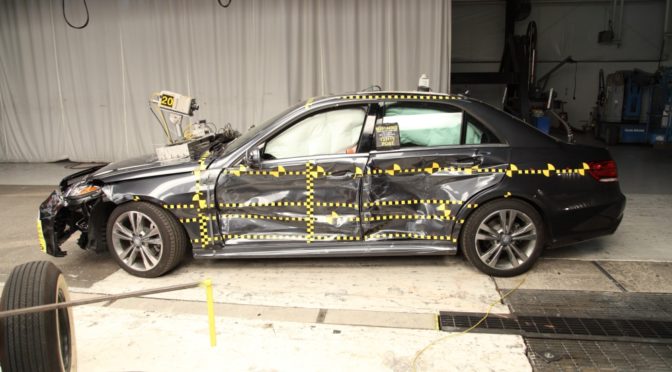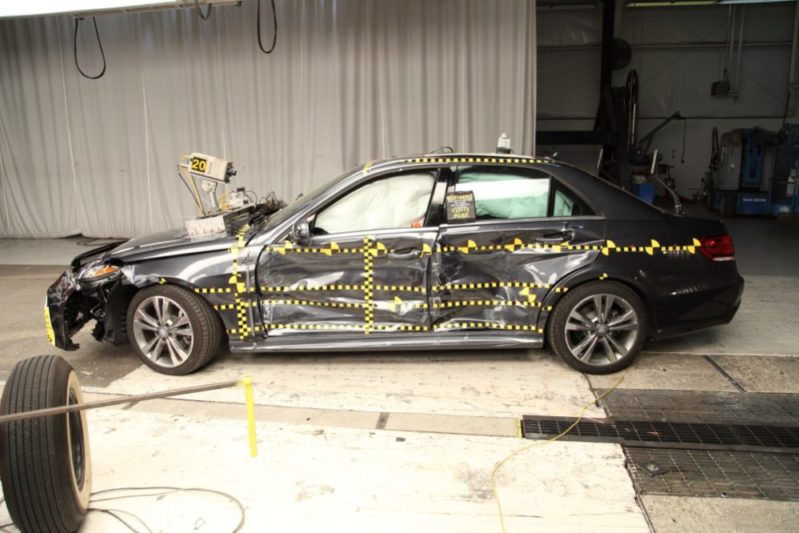
Side impact collisions are among the most dangerous kinds of collisions we ever face in a passenger-sized vehicle. In order to keep our loved ones safe if we’re ever unfortunate enough to be involved in a t-bone, it helps to have some of the latest technology on our side. To that end, I’ve spent the last several years compiling lists of vehicles in various classes with the best crash test performance in side impacts to help parents and families make better new and used buying decisions. Previous articles in this series are below:
Side Impact Safety in 2015
The safest cars for side impact survival.
The safest minivans for side impact survival.
The safest small cars for side impact survival.
The safest SUVs and crossovers for side impact survival.
Side Impact Safety in 2016
The safest small SUVs and crossovers for side impact survival.
The safest minivans for side impact survival.
How dangerous are side impact collisions compared to frontal or rear collisions?
To put it simply, side impact collisions are the collisions that are most likely to take your life or the life of a loved one, when compared with front-, and rear-end collisions. From doing the math in an earlier post on side impact collisions, we know that even though only around 1 out of every 5 collisions involve side impacts, they lead to 1 out of every 3 vehicle occupant deaths in multiple vehicle collisions. In comparison, basically 1 out of 2 collisions involve frontal impacts, which lead to around 1 out of every 2 multiple collision deaths. Even more dramatically, while more than 1 out of every 4 collisions are rear enders, they only result in around 1 out of every 12 multiple collision deaths.
Looking at the numbers shows us side impacts are the collisions most likely to be fatal, even though they’re the least common. Knowing this, it’s worth figuring out how to reduce our risks of dying from one.
How to keep from dying in a side impact collision – what options do we have?
Unfortunately, if you live in the United States, you live in a country that isn’t the most willing to make changes to make our roads safer for everyone. In the US, you can drink much, much more before you’re considered drunk than you would in many parts of Europe (where the driver death rates are lower). Similarly, you don’t really have restrictions on how big your vehicle can be, regardless of how little experience you have as a driver. This isn’t the case in a number of other countries. You also live in a country that turns a blind eye toward many speed limits and is vehemently opposed to traffic cameras, despite their prevalence in countries with lower crash death rates. And of course, you’re also in a country where it’s hard to travel long (or short) distances inexpensively without driving.
I’ve written about some of these issues in past articles, such as one on why Swedish roads are among the safest in the world, and another on why driving in Europe is safer than driving in the US. I’ll have more articles soon about the things we can learn from other countries when it comes to driving safely (e.g., learning from Norway when it comes to child safety, looking into why Iceland has so few traffic deaths per year, and what Norway does differently to make its roads among the safest in the world for all drivers).
However, until we’re willing to make a number of necessary changes, if you’re invested in keeping your family safe from death in t-bone collisions, I’d recommend you:
1.) Avoid driving (e.g., by using public transportation or by cycling or walking…eventually this leads to a critical mass where everyone is safer).
2.) Limit driving (by the same measures above and by combining trips).
3.) Drive the most side-impact-resistant vehicles possible.
Ultimately, to truly bring an end to side impact collisions, as well as to all collisions, we’re going to need to be forced to invest in the first two measures. I’d consider self-driving or autonomous vehicles to be part of “avoiding driving,” even though those aren’t going to eliminate collisions completely until the vast majority of vehicles on the road are no longer being driven by humans (the critical mass argument).
However, unless you’re in a position to completely follow step 1, you’ll need to focus on 2 and 3. Step 2 isn’t always feasible either, so this post focuses on Step 3, and deals specifically with choosing the safest family cars available for side impact protection in the US in 2016. I realize 2016 is close to an end, but this is also means this is the best time of the year to get discounts on current year models if you’re interested in the latest technology. Fortunately, as you’ll see below, you don’t always need the newest vehicles to be as safe as currently possible. You just need to know who’s doing the best job.
Calculating which family cars are the safest for side impact collisions by structural integrity (crush distance)
I’ve written about the math behind these calculations in previous posts, such as in the relevant articles on surviving side impacts in cars, minivans, and SUVs and crossovers, so hop back to those articles to read about this in detail. The short version is that the IIHS runs a side impact test. It simulates a 3300 lb SUV crashing into the side of a vehicle at 31 mph, or 143.7KJ of kinetic energy. Every vehicle deforms somewhat at the B-pillar when absorbing such an impact, and there’s a subscore in the IIHS test known as the “structure and safety cage” looks into how close the B-pillar intrudes into the center of the driver’s seat during the collision. Less intrusion is better. Let’s see who has the least intrusion right now in the family car market.
I searched through the test scores of every family car currently available in the US to make this best-of list. I’m defining family cars as any car capable of transporting at least five individuals, which knocks out most coupes and toy cars. I also made the lower threshold for inclusion in the list 20 cm of intrusion resistance, which knocked out a lot of vehicles that were present the last time I made this list. These are the best of the best.
Keep in mind that the IIHS continually updates their side impact information while gathering additional information, so in a few months, it’s likely that these numbers may be slightly different, and I’ll have another article to reflect those changes. All data is accurate as of late October 2016, and all images are either from yours truly or courtesy of Wikipedia.
The 5 safest family cars for side impact collisions in 2016
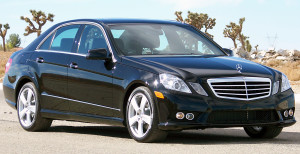 24 cm – 2010-2016 Mercedes-Benz E-Class sedan (e.g., E 350).
24 cm – 2010-2016 Mercedes-Benz E-Class sedan (e.g., E 350).
Six years since its debut, the current generation E-Class sedan is still the safest mainstream car in the United States today when it comes to side impact crash survival, based on its country-leading 24 cm of crush protection. No other family car does a better job, and only one publicly available car of any kind does better (the Lexus RC at 26 cm).
It’s worth noting as well that in the ’05-’08 model years, the E-Class Sedan was estimated to have a zero driver death rate by the IIHS, as a nod to the overall strong track record of this vehicle and its drivers. That previous generation of the E-Class sedan led to this generation.
You can read my full 3 across guide to the E-Class here.
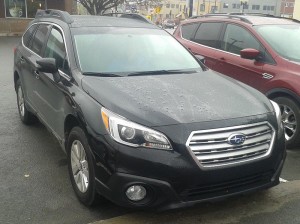 22 cm – 2015-2016 Subaru Outback.
22 cm – 2015-2016 Subaru Outback.
Hot on the heels of the E-Class sedan comes the latest Outback from Subaru. Subaru continues to impress throughout their line, and their marketing themselves as a younger, fresher, and outdoorsier version of Volvo is paying off, as well as their obvious attention to safety in models like the Outback.
As I’ve said elsewhere, crash ratings are great to have, but real life survival is the ultimate test, and the recent Outback is one of the highest scorers in real life tests. In particular, the ’10-’11 Outback had a driver death rate of 6, as I wrote about here. That Outback is the generation prior to this Outback, and it had an intrusion resistance of 15-17.5 cm.
You can read my full 3 across guide to the Outback here.
 22 cm – 2015-2016 Volkswagen Golf / GTI.
22 cm – 2015-2016 Volkswagen Golf / GTI.
The Golf scores marvelously here, tied with the Outback as the 2nd-most impact resistant car on the list. What makes it even more impressive is the fact that it’s neither a large nor a mid-sized car, but a small one. The Golf is available in several flavors, but all feature good safety scores, including the side impact frontal crash test score, and all feature a class-leading 22 cm of side impact intrusion protection.
You can read my full 3 across car seat guide to the Golf / GTI here.
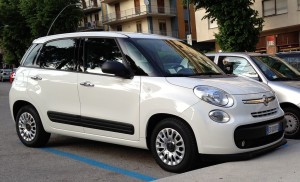 21 cm – 2014-2016 Fiat 500L.
21 cm – 2014-2016 Fiat 500L.
The Fiat 500L continues to hold its own as one of the most structurally sound cars on the market for side impacts. However, it’s disappointing to see that Fiat has not done anything to improve the poor small overlap score that the 500L received in 2015 when tested by the IIHS. I wrote last year that Fiat would have to step up their game in that area, and they are yet to do so. That said, it’s impressive to see it close to the top of the list when it comes to side impact protection, especially considering its placement as the second-best small family car you can currently buy.
You can read my full 3 across guide to the 500L here.
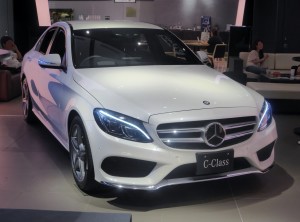 20.5 cm – 2009-2016 Mercedes-Benz C-Class sedan (e.g., C 400).
20.5 cm – 2009-2016 Mercedes-Benz C-Class sedan (e.g., C 400).
Mercedes makes another of several entries in the safest side impact car rankings with the C-Class sedan, which is essentially a smaller version of their E-class sedan. The 2009-2015 models of the C-Class sedan all feature 20.5 cm of intrusion resistance at the B-pillar in the IIHS test, an incredibly impressive streak.
Of course, the true test for intrusion resistance, is real life survival, and the C-Class has also performed well here. Per the IIHS, the ’08-’11 C-Class sedan featured driver death rates of 7 and 10 in the 4WD and 2WD models respectively, which I wrote about here.
The fact that the 2009 C-Class is still one of the most intrusion-resistant vehicles you can buy 7 years after its release is noteworthy, and another testament to the safety commitment present at Mercedes-Benz.
You can read my full C-Class 3 across guide here.
How to choose a car to keep you safe in side impact crashes
In conclusion, what does this all mean? Should you sell your current car and buy one of the above immediately? Is every other car on the road just not good enough?
Well, not exactly. There are a number of other great vehicles that I didn’t include on the list to save time that were literally only a centimeter or two away from appearing on the list. The Subaru Legacy, for example, recently appeared on the IIHS’ “zero list” for driver deaths, and is by all accounts one of the safest cars you can currently buy. However, the current generation didn’t make the list because it had an intrusion score of 19.5 cm the last time I checked, and I cut the list off at 20 cm. And to be precise, the version of the Legacy that appeared on the zero list was the 2010-2011 Legacy, which had an intrusion score of 14 cm and wouldn’t have been anywhere near this list even if I’d extended it significantly.
There are also a number of recognized automakers like Toyota, Honda, and Volvo whose vehicles didn’t make the cutoff simply because I was only interested in the top vehicles for this post. This doesn’t mean there aren’t other safe choices out there. It just means I focused on the very best-performing ones.
The takeaway message is that it’s worth looking beyond the overall “good” score and diving into the structural integrity subscore when searching for safe cars for this particular kind of crash. Of course, you’ll start with looking for airbags and the overall “good” score, but beyond that, if you’re choosing between two vehicles that seem good on paper, dive into this subscore and you might be surprised at what you find. And remember that just because a car isn’t anywhere near the top numbers on this list doesn’t mean it’s not safe. The older E-Class sedan I mentioned with the zero driver death rate didn’t even have a “good” overall score! It was “acceptable!” Furthermore, the “structure and safety cage” score was also “acceptable,” as it was 7.5 to 9 cm, depending on which year it was manufactured. And yet, because of its drivers, the overall safety of the vehicle, and a good amount of luck, no drivers in it died for several years.
We can’t control everything. The safest option is still not driving at all, followed by driving as little as possible. But if you’ve got to drive, drive safely, and do your best to choose a safe vehicle. To that end, my safe family vehicle analyses for cars and SUVs are worth reading.
I hope you enjoyed reading this as much as I enjoyed writing it. It’s exciting to see where we’re headed in vehicle safety these days. I’ll have followup articles soon comparing comparing car and SUV safety along the same metrics. Stay tuned, remember to avoid common mistakes parents make with car seats, and check out some 3 across car seat guides while you’re here.
If you find the information on car safety, recommended car seats, and car seat reviews on this car seat blog helpful, you can shop through this Amazon link for any purchases, car seat-related or not. Canadians can shop through this link for Canadian purchases.

